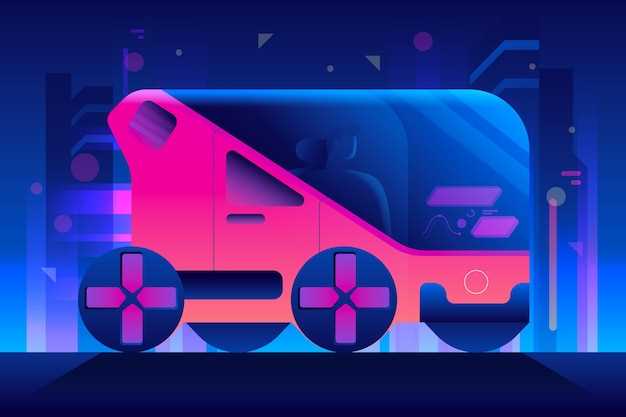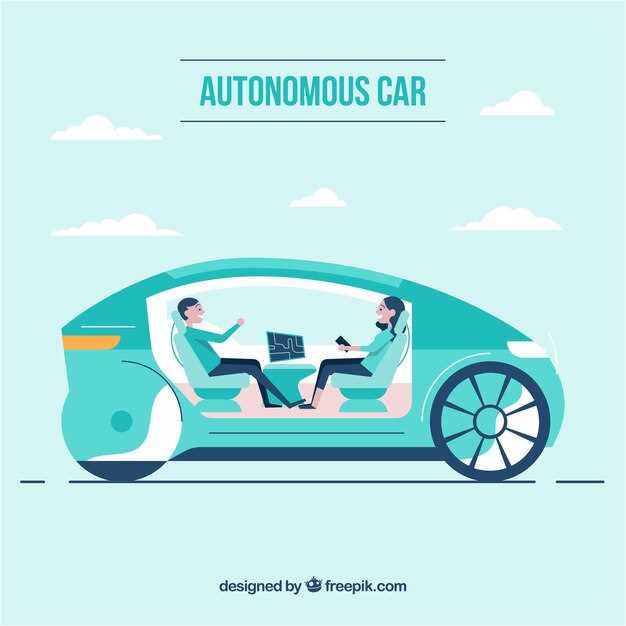
The world of transportation is on the brink of a significant transformation, primarily driven by advances in autonomous vehicle technology. As we look into the future, it is evident that self-driving cars hold the potential to redefine how we commute, enhance road safety, and reshape urban landscapes. With technological innovations rapidly evolving, the integration of smart systems and artificial intelligence into vehicles suggests a departure from conventional driving paradigms.
As we delve deeper into the possibilities that lie ahead, it is crucial to understand the key trends shaping the development of autonomous vehicles. These trends not only include advancements in sensor technology and machine learning but also regulatory frameworks and societal acceptance, which will play pivotal roles in determining the success of autonomous cars. The future will likely see partnerships between technology companies and traditional automakers, leading to innovative solutions that address the challenges associated with fully autonomous driving.
Moreover, the implications of autonomous vehicles extend beyond personal convenience. They hint at a future where transportation is more efficient and environmentally friendly. With the potential to decrease traffic congestion, lower emissions, and improve mobility for underserved populations, autonomous cars promise to contribute significantly to sustainable urban development. Understanding these trends will be vital for stakeholders in the automotive industry, city planners, and policymakers alike as they navigate the complexities of this transformative technology.
How AI Algorithms Improve Self-Driving Decision Making

As the future of autonomous vehicles unfolds, AI algorithms play a pivotal role in enhancing decision-making processes for self-driving cars. These algorithms analyze vast amounts of data collected from the vehicle’s surroundings, including traffic patterns, road conditions, and pedestrian behaviors.
Machine learning models are particularly effective in predicting potential hazards and determining the best course of action. By utilizing historical data, these algorithms can adapt and improve over time, learning from previous experiences to refine their decision-making capabilities. This continuous learning ensures that self-driving cars become more efficient and safer as they accumulate knowledge.
Another key aspect is the use of real-time data processing. Autonomous vehicles rely on sensors such as cameras, LIDAR, and radar to gather information instantaneously. AI algorithms process this data in real-time, allowing the car to respond promptly to dynamic driving conditions. This responsiveness is crucial for navigating complex environments, where quick decisions can prevent accidents.
Furthermore, AI algorithms enable vehicles to communicate with each other, sharing information about road situations and traffic conditions. This inter-vehicle communication enhances situational awareness, allowing cars to collaborate on safety measures and optimize routing, which is critical for improving traffic flow in the future.
In summary, the integration of advanced AI algorithms in self-driving cars is fundamental for enhancing decision-making. By leveraging machine learning, real-time data analysis, and vehicle communication, autonomous vehicles are positioned to revolutionize transportation, making future cars safer, more efficient, and ultimately more reliable.
Impact of 5G Connectivity on Autonomous Vehicle Performance
The integration of 5G connectivity into the realm of self-driving cars is set to revolutionize their performance and functionality. With significantly higher data transfer speeds and reduced latency, 5G technology enables real-time communication between vehicles and their surrounding environment, enhancing the decision-making processes of autonomous systems.
One of the critical advantages of 5G for self-driving cars is the ability to process large amounts of data instantaneously. Autonomous vehicles rely on data from various sources, such as sensors, cameras, and road infrastructure. With 5G, the communication between vehicles and these data sources becomes seamless and instantaneous, allowing for quicker responses to dynamic driving conditions.
Moreover, 5G connectivity facilitates advanced vehicle-to-everything (V2X) communication. This technology allows self-driving cars to share information with other vehicles, traffic signals, and even pedestrians. Such interactions will significantly enhance safety and traffic efficiency by reducing the risks of accidents and optimizing traffic flow.
Another area where 5G contributes is in the enhancement of autonomous navigation systems. With improved connectivity, self-driving cars can access up-to-date maps, traffic conditions, and hazard information, enabling better route planning and navigation accuracy. This capability is essential for ensuring vehicles can adapt to changing environments and make informed driving decisions.
In summary, the impact of 5G connectivity on autonomous vehicle performance is profound. From real-time data communication to improved V2X capabilities, 5G technology enhances the efficacy and safety of self-driving cars. As this technology continues to evolve, it will play a pivotal role in shaping the future of autonomous transportation.
Regulatory Challenges and Opportunities for Future Autonomous Cars

The rapid advancement of autonomous vehicle technology presents a unique set of regulatory challenges that must be addressed to ensure safe and efficient integration into society. Legislators are tasked with creating frameworks that balance innovation with public safety, regulatory clarity, and societal acceptance.
One major challenge lies in the development of standardized regulations that can adapt to varying levels of vehicle automation. Current regulations are predominantly designed for human-operated cars, which creates a significant gap when it comes to sliving guidelines for fully autonomous vehicles. As these technologies evolve, regulations must be flexible enough to accommodate new developments while maintaining safety standards.
In addition, addressing liability issues poses a critical challenge. Determining responsibility in the event of an accident involving autonomous cars is complex, as it involves multiple parties, including manufacturers, software developers, and vehicle owners. Legislators must establish clear laws that outline accountability to foster trust among consumers and facilitate market growth.
However, these challenges also present opportunities for innovation in regulatory frameworks. Collaboration between government agencies, industry leaders, and technology experts can lead to the establishment of smart regulations that not only enhance safety but also promote technological advancements in autonomous vehicles. Public-private partnerships can be instrumental in pilot programs that test autonomous systems in real-world scenarios, providing valuable data to inform future regulations.
Moreover, fostering public confidence in autonomous cars is vital to their widespread acceptance. Regulatory bodies can play a pivotal role by ensuring transparency in safety assessments and offering educational initiatives that inform the public about the benefits and safety of autonomous technology. A proactive approach to regulation that emphasizes safety without stifling innovation could accelerate the adoption of autonomous vehicles, making the integration process smoother and more effective.
In conclusion, while there are significant regulatory challenges facing the future of autonomous cars, there are also substantial opportunities to create a balanced approach that promotes safety, accountability, and innovation. By navigating these complexities thoughtfully, regulators can pave the way for a future where autonomous vehicles become a safe and reliable part of daily transportation.






